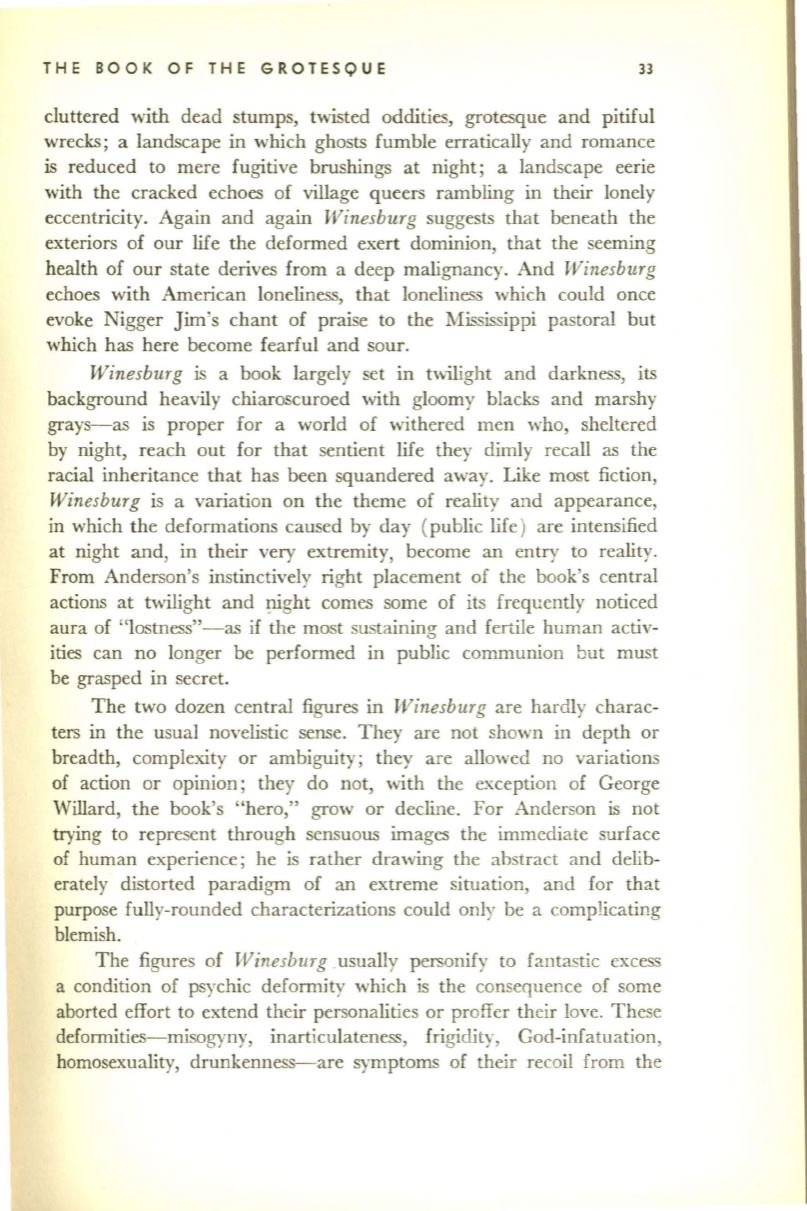
THE BOOK OF THE GROTESQUE
33
cluttered with dead stumps, twisted oddities, grotesque and pitiful
wrecks; a landscape in which ghosts fumble erratically and romance
is reduced to mere fugitive brushings at night; a landscape eerie
with the cracked echoes of village queers rambling in their lonely
eccentricity. Again and again
Winesburg
suggests that beneath the
exteriors of our life the deformed exert dominion, that the seeming
health of our state derives from a deep malignancy. And
Winesburg
echoes with American loneliness, that loneliness which could once
evoke Nigger Jim's chant of praise to the Mississippi pastoral but
which has here become fearful and sour.
Winesburg
is a book largely set in twilight and darkness, its
background heavily chiaroscuroed with gloomy blacks and marshy
grays-as is proper for a world of withered men who, sheltered
by night, reach out for that sentient life they dimly recall as the
racial inheritance that has been squandered away. Like most fiction,
Winesburg
is a variation on the theme of reality and appearance,
in which the deformations caused by day (public life) are intensified
at night and, in their very extremity, become an entry to reality.
From Anderson's instinctively right placement of the book's central
actions at twilight and
~ight
comes some of its frequently noticed
aura of "lostness"- as if the most sustaining and fertile human activ–
ities can no longer be performed in public communion but must
be grasped in secret.
The two dozen central figures in
Winesburg
are hardly charac–
ters in the usual novelistic sense. They are not shown in depth or
breadth, complexity or ambiguity; they are allowed no variations
of action or opinion; they do not, with the exception of George
Willard, the book's "hero," grow or decline. For Anderson is not
trying to represent through sensuous images the immediate surface
of human experience; he is rather drawing the abstract and delib–
erately distorted paradigm of an extreme situation, and for that
purpose fully-rounded characterizations could only be a complicating
blemish.
The figures of
Winesburg
.usually personify to fantastic excess
a condition of psychic deformity which is the consequence of some
aborted effort to extend thcir personalities or proffer their love. These
deformities-misogyny, inarticulateness, frigidity, God-infatuation,
homosexuality, drunkenness-are symptoms of their recoil from the


